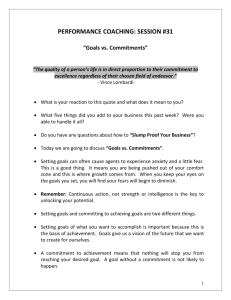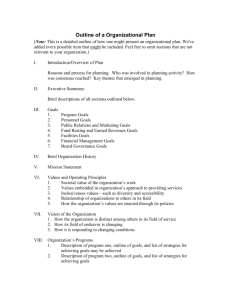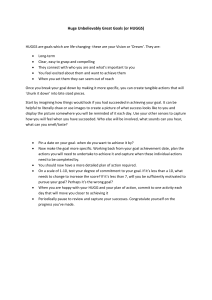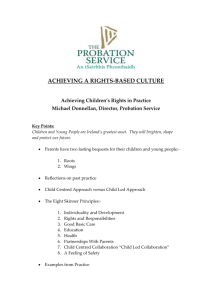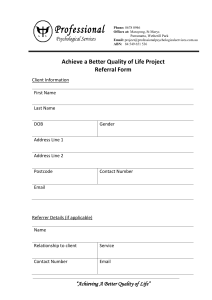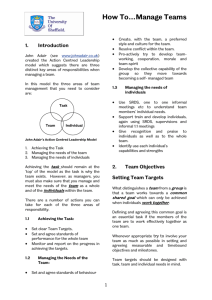Agribusiness and Marketing
advertisement
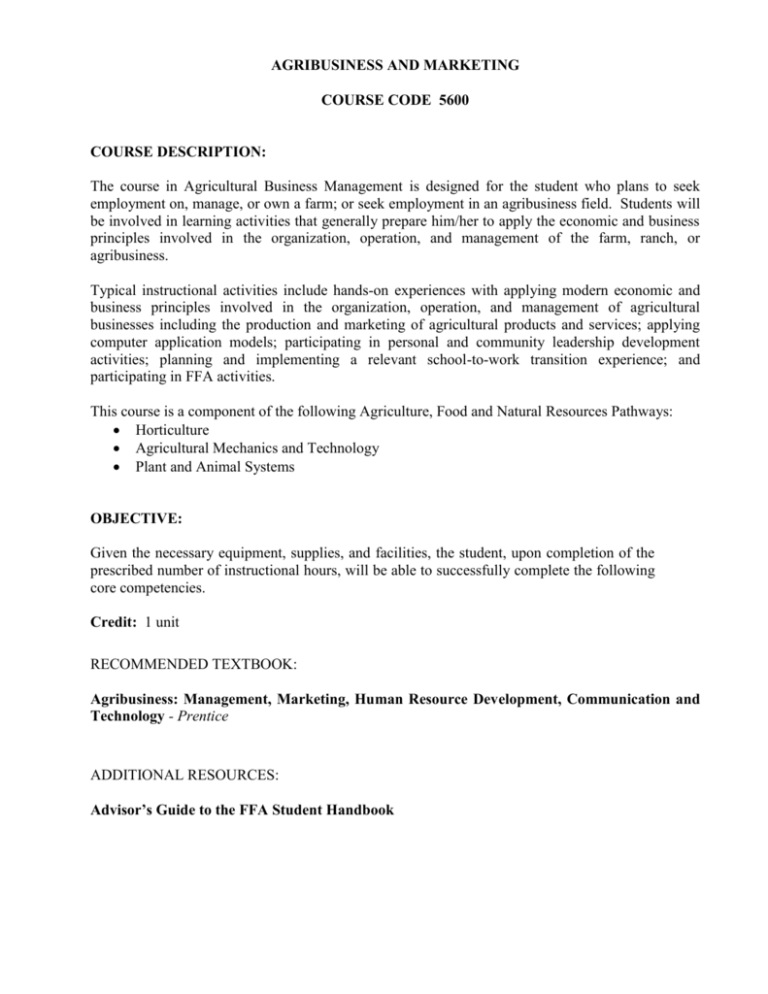
AGRIBUSINESS AND MARKETING COURSE CODE 5600 COURSE DESCRIPTION: The course in Agricultural Business Management is designed for the student who plans to seek employment on, manage, or own a farm; or seek employment in an agribusiness field. Students will be involved in learning activities that generally prepare him/her to apply the economic and business principles involved in the organization, operation, and management of the farm, ranch, or agribusiness. Typical instructional activities include hands-on experiences with applying modern economic and business principles involved in the organization, operation, and management of agricultural businesses including the production and marketing of agricultural products and services; applying computer application models; participating in personal and community leadership development activities; planning and implementing a relevant school-to-work transition experience; and participating in FFA activities. This course is a component of the following Agriculture, Food and Natural Resources Pathways: Horticulture Agricultural Mechanics and Technology Plant and Animal Systems OBJECTIVE: Given the necessary equipment, supplies, and facilities, the student, upon completion of the prescribed number of instructional hours, will be able to successfully complete the following core competencies. Credit: 1 unit RECOMMENDED TEXTBOOK: Agribusiness: Management, Marketing, Human Resource Development, Communication and Technology - Prentice ADDITIONAL RESOURCES: Advisor’s Guide to the FFA Student Handbook Unit A DEVELOPING LEADERSHIP SKILLS IN AGRICULTURE Lesson 1. Planning and Organizing an FFA Meeting Student Learning Objectives:. Instruction in this lesson should result in students achieving the following objectives: 1. Explain how to plan a meeting and develop the order of business. 2. Describe how to set up the meeting room. 3. Explain the parliamentary procedure used in an FFA meeting. Lesson 2. Developing an Awareness for Your Community Student Learning Objectives:. Instruction in this lesson should result in students achieving the following objectives: 1. Describe the meaning and importance of community service. 2. List and identify community service organizations. 3. Explain how FFA members can be involved with community improvement and development. Lesson 3. State FFA Degree Student Learning Objectives:. Instruction in this lesson should result in students achieving the following objectives: 1. List the requirements for the State FFA Degree. 2. Explain how a FFA member can obtain the State FFA Degree. UNIT B Supervised Experience in Agriculture Lesson 1 Keeping and Using SAE Records Student Learning Objectives: Instruction in this lesson should result in students achieving the following objectives: 1 Explain how SAE records are organized. 2. Identify the procedures to making entries in the SAE records. 3. Explain how to summarize and analyze the SAE records. Lesson 2 Making Long Range Plans for Expanding SAE Programs Student Learning Objectives: Instruction in this lesson should result in students achieving the following objectives: 1. Identify the factors that should be considered in expanding an SAE program. 2. Explain how placement and ownership SAE programs may be expanded. Unit C. INTRODUCTION TO AGRIBUSINESS Lesson 1 What is Agribusiness? Student Learning Objective: Instruction in this lesson should result in students achieving the following objectives: 1. Discuss the history of agribusiness 2. List the benefits of agribusinesses to the United States. 3. Discuss size and purposes of different agribusinesses. 4. List the different types of agribusinesses 5. Public Agribusiness Services (USDA, FSA, Extension Service) UNIT D. MARKETING Lesson 1 Principles of Marketing Student Learning Objective: Instruction in this lesson should result in students achieving the following objectives: 1. Define terms associated with marketing. 2. Explain agribusiness marketing. 3. Explain supply and demand. 4. How do we (consumers) affect agribusiness? 5. What are farm commodities? 6. List the types of markets. 7. Discuss methods of marketing ag products Lesson 2 Commodity Futures Marketing Student Learning Objective: Instruction in this lesson should result in students achieving the following objectives: 1. Define terms associated with commodity marketing. 2. Discuss the history of the commodity futures market 3. What is a commodity futures exchange? 4. List commodities traded at an exchange. 5. What is a futures contract? 6. List the types of futures trading transactions. 7. Describe a hedger and a speculator in the futures market. 8. Explain how to make a futures trading transaction. 9. Discuss regulations within the commodity exchange. Lesson 3 International Agriculture Marketing Student Learning Objective: Instruction in this lesson should result in students achieving the following objectives: 1. Define terms associated with international marketing of ag products. 2. Explain the importance of international trade. 3. Discuss importing and exporting of ag products. 4. Describe the ag trade balance. 5. What are import and export trade barriers? 6. Discuss international trade agreements. Lesson 4 Pieces of the Agrimarketing System Student Learning Objective: Instruction in this lesson should result in students achieving the following objectives: 1. Describe wholesaling. 2. Describe retailing. 3. Discuss the food service industry. 4. Discuss product processing and manufacturing. Unit E. ECONOMICS Lesson 1 Economics in America Student Learning Objective: Instruction in this lesson should result in students achieving the following objectives: 1. Define terms associated with economics. 2. Define economics. 3. Discuss the components of economics. 4. Discuss the differences between micro and macroeconomics. 5. Describe the characteristics of the American economy. 6. Discuss economic activity in America. 7. Explain the role of the federal government in the economy. UNIT F BUSINESS MANAGEMENT Lesson 1 Personal Financial Management Student Learning Objective: Instruction in this lesson should result in students achieving the following objectives: 1. Discuss expectations of employment and earning money 2. Determine the difference between gross salary versus net pay 3. List mandatory deductions for the paycheck 4. Discuss taxes and benefits associated with employment 5. Develop a personal budget 6. Discuss debt and debt management Lesson 2 Dealing with People Student Learning Objective: Instruction in this lesson should result in students achieving the following objectives: 1. Identify employers leadership styles 2. Discuss personality types and their relationship to behavior 3. Discuss pros and cons of working in teams 4. Develop effective communication skills through writing and oral communications Lesson 3 Workplace Ethics Student Learning Objective: Instruction in this lesson should result in students achieving the following objectives: 1. Define values 2. Discuss personal and societal values 3. Discuss the importance of time management on the job 4. Demonstrate proper phone etiquette 5. Demonstrate proper e-mail etiquette 6. Discuss meeting etiquette 7. Discuss conflict of interest and other illegal activities 8. Discuss employee responsibilities Lesson 4 Goal setting and planning for success Student Learning Objective: Instruction in this lesson should result in students achieving the following objectives: 1. List reasons for setting goals 2. Identify personal short term and long term goals 3. Develop a plan of action to obtain chosen career 4. Job shadow at two different local businesses 5. Visit a college campus 6. Visit a tech school campus Unit G DEVELOPING COMMUNICATION SKILLS Lesson 1—Introduction to Communication Student Learning Objectives: Instruction in this lesson should result in students achieving the following objectives: 1. Define communication and explain its purpose. 2. Identify the components of the communication process. 3. Identify the five different levels of communication. 4. Explain the barriers of successful communication. 5. Explain the relationship between communication and leadership. Lesson 2—Organizing and Presenting a Persuasive Message Student Learning Objectives: Instruction in this lesson should result in students achieving the following objectives: 1. Explain the steps in preparing a persuasive message. 2. Describe delivery techniques in a persuasive message. Lesson 3—Using Communication Skills In Appropriate Situations Student Learning Objectives: Instruction in this lesson should result in students achieving the following objectives: 1. Understand the role of communication skills in the workplace. 2. Understand how to present a problem to a supervisor. 3. Identify the techniques used in requesting information from a supervisor. 4. Explain the role of written communication in an agribusiness. Unit H Gaining Employment Lesson 1—Developing Goals Student Learning Objectives: Instruction in this lesson should result in students achieving the following objectives: 1. Explain the process of goal setting. 2. Describe the terms and types of goals. 3. Explain some aspects of effective goals. Lesson 2—Finding a Job Student Learning Objectives. Instruction in this lesson should result in students achieving the following objectives: 1. Describe information sources for job opportunities. 2. Develop a system to evaluate job openings. Lesson 3—Applying for a Job Student Learning Objectives. Instruction in this lesson should result in students achieving the following objectives: 1. Explain how to research a job opportunity. 2. Describe two methods of applying for a job. 3. Identify the common types of information requested on a job application form.. Lesson 4—Writing a Résumé and Letter of Application Student Learning Objectives. Instruction in this lesson should result in students achieving the following objectives: 1. Explain the purpose of a résumé. 2. List the main items that should be included in a résumé. 3. Describe the purpose of a letter of application and its primary elements.
